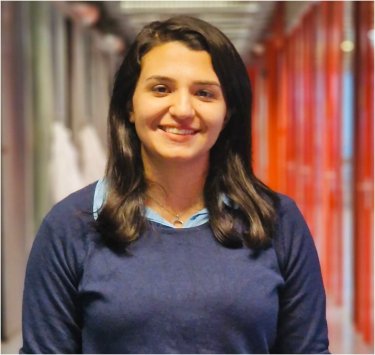Sustainable production pathways for added value products from microalgae - A superstructure optimization approach
Maryam Raeisi is a PhD student in the department Sustainable Process Technology. Supervisors are prof.dr.ir. E. Zondervan and prof.dr.ir. M.B. Franke from the faculty of Science & Technology.
 In this thesis, a framework is developed to find a pathway (economically and environmentally) for producing added-value products from several types of microalgae, considering the uncertain conditions of feedstocks. Three types of microalgae biorefineries (Cholera Vulgarise, Haematococcus Pluvialis, Nannochloropsis spp.) are considered that produce six added-value products (pigment, biodiesel, glycerol, omega-3, fertilizer, and biogas). To reach this goal three tasks are executed: 1) development of superstructure optimization framework for identifying promising production routes, 2) The systematic assessment of uncertainty throughout the decision process, and 3) the balancing of economic gains with environmental impact via a life cycle assessment (LCA).
In this thesis, a framework is developed to find a pathway (economically and environmentally) for producing added-value products from several types of microalgae, considering the uncertain conditions of feedstocks. Three types of microalgae biorefineries (Cholera Vulgarise, Haematococcus Pluvialis, Nannochloropsis spp.) are considered that produce six added-value products (pigment, biodiesel, glycerol, omega-3, fertilizer, and biogas). To reach this goal three tasks are executed: 1) development of superstructure optimization framework for identifying promising production routes, 2) The systematic assessment of uncertainty throughout the decision process, and 3) the balancing of economic gains with environmental impact via a life cycle assessment (LCA).
Results of optimizing the superstructure with MINLP model show that the type of microalgae does not influence the decision-making regarding the different processing steps and the optimized production pathway is: open pond, sedimentation and flotation, flocculation without any dryer, sonication, organic solvent pigment extraction, n-butanol solvent lipid extraction, lipid production, and anaerobic digestion. The annual profit of the Haematococcus Pluvialis biorefinery is highest with (62$/ kg of microalgae due to the high pigment price (3608.5 $/kg). This biorefinery produces approximately 500 t of pigment bioproducts from 24 Kt biomass by using 200 Kt of wastewater.
The uncertain character of these feedstocks affects the annual profit and quantities of bioproducts of microalgae biorefineries. From a Monte Carlo simulation, the average profit margin of Haematococcus Pluvialis biorefinery (as highest profitable microalgae biorefinery) is 62.98 $/kg. This microalgae biorefinery has 80% probability of earning profit margin between 62.55 ($/kg) and 62.98 ($/kg), according to a cumulative distribution function curve. Furthermore, annual profit margin of microalgae biorefinery are reduced by approximately 50% when using actual sunshine duration in the Netherlands.
The selected pathways from the superstructure optimization are used to compute the environmental impacts. LCA studies of these three microalgae biorefineries show that Nannochloropsis spp. biorefinery has the most different environmental impacts due to high productivity. The remnant treatment has the greatest impact on global warming, human toxicity, ecotoxicity, and acidification. Cultivation and harvesting have the most eutrophication impact.





